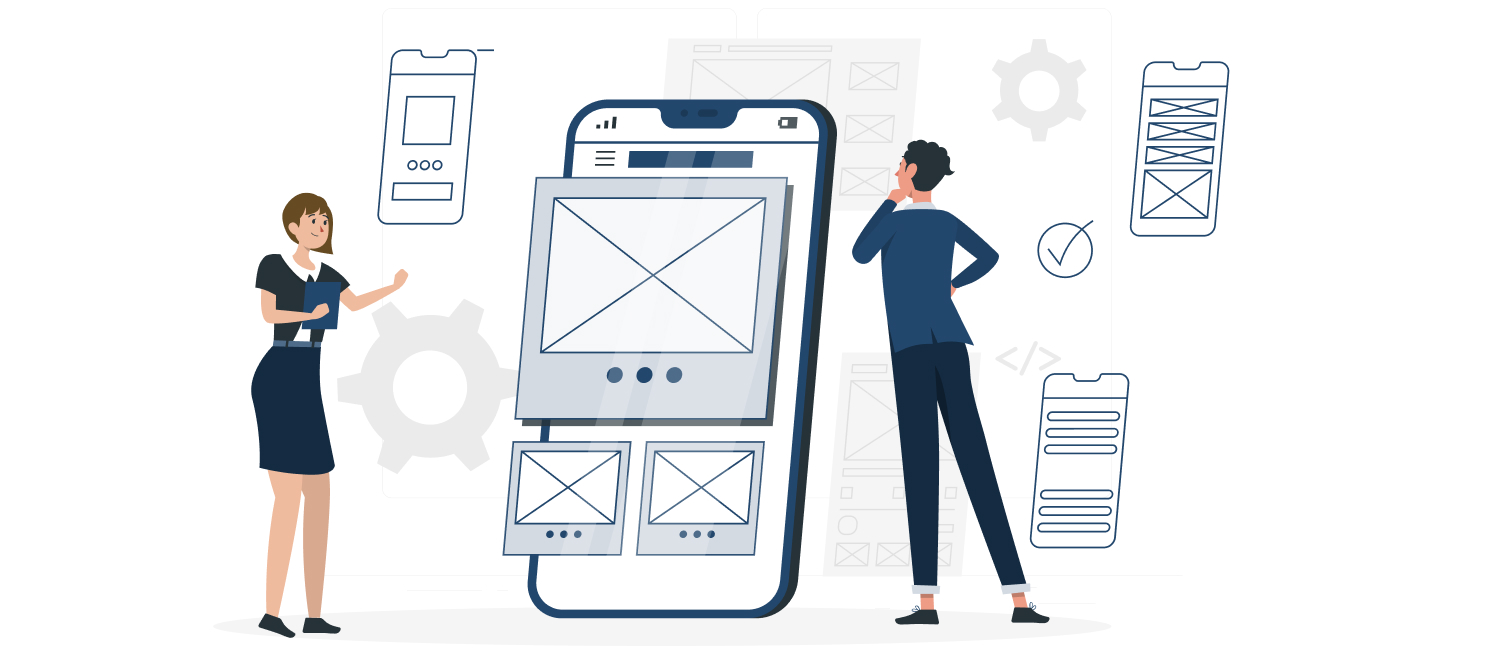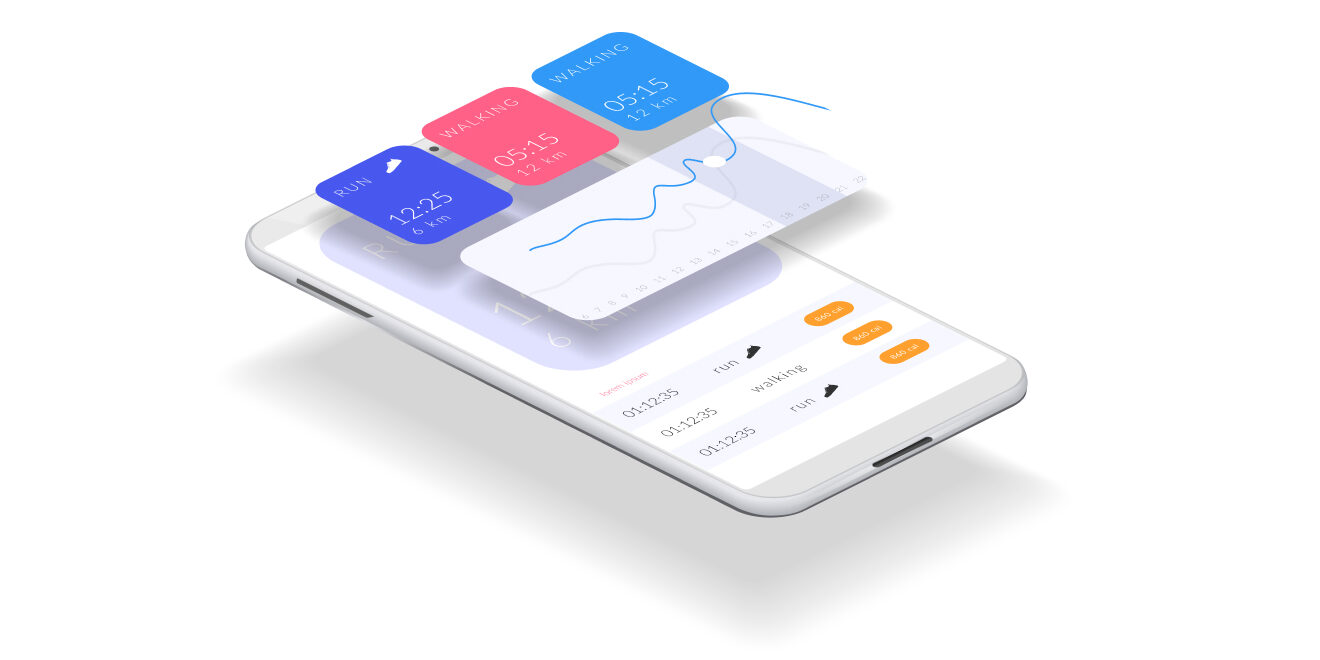Digital Prototypes: Why They're Essential to the Product Design Process.
From smartphones to electric cars, certain products have permanently reshaped the landscape of our daily lives. But have you ever wondered how great products evolve from a simple idea to a groundbreaking innovation? At the heart of every successful product lies a process that shapes, tests, and refines the initial concept from an idea to a fully-designed product that satisfies users. This journey, known as the product design process, is filled with challenges, but one critical innovation within this process that has proven to be a game-changer is digital prototyping. Digital prototypes for software applications serve as the bridge between an idea and a tangible product, allowing designers, engineers, and stakeholders to visualize, evaluate, and improve their designs before they are developed and released in a production environment. In this post, we’ll take a look at the fascinating world of digital prototypes, exploring their significance in the product design process and the ways they help streamline the product design and development journey from concept to creation.
What are Digital Prototypes?
Digital prototypes are virtual representations of a product or system that enable designers, engineers, and stakeholders to visualize, test, and refine a design before it’s implemented. Unlike traditional physical or analog prototypes, digital prototypes can be easily modified, allowing for rapid iteration and experimentation throughout the design process. Most digital prototypes for software applications are created using tools such as Figma and Adobe XD, allowing designers to manipulate design elements and create active prototypes that simulate interactions and animations on various devices.

Why is Digital Prototyping Important?
In recent years, digital prototyping has emerged as an essential element of the product design process, with companies around the world investing heavily in its development and implementation. In fact, a staggering USD 210.4 million was spent on digital prototypes globally in 2017 alone. This impressive figure is only set to increase, with a projected growth of 19.4% by 2025. But why exactly is digital prototyping so vital to contemporary product design, and how can it benefit your business? In this article, we delve into the key advantages that make digital prototyping an indispensable tool for any company looking to create cutting-edge products in today's competitive market.
One of the primary benefits of digital prototyping lies in its ability to streamline the design process by allowing engineers and designers to quickly create, test, and iterate virtual prototypes before a single physical prototype is constructed. This not only saves time but also reduces the costs associated with the traditional trial-and-error approach to product development. By detecting and resolving design flaws early on, companies can avoid costly redesigns delays further down the line.
Another major advantage of digital prototyping is its capacity for enhancing collaboration between team members. By utilizing cloud-based platforms, designers and engineers can easily share and access digital models, enabling them to work together seamlessly from any location. This increased level of collaboration fosters innovation, as it allows ideas to be tested and refined more efficiently than ever before. In turn, this can result in the creation of groundbreaking products that meet and exceed customer expectations.
Moreover, digital prototyping provides valuable insights into the performance of a product under various conditions, enabling designers to make data-driven decisions regarding form, and functionality. By simulating real-world scenarios and analyzing the resulting data, designers can optimize product performance and ensure that it meets the necessary usability standards. This not only results in a higher quality end product but also helps to build trust with customers and other stakeholders.
Digital prototyping is also an invaluable tool for marketing and sales teams, as it allows them to demonstrate a product's features and benefits to potential clients before it is fully manufactured. This can generate interest and excitement around a product, ultimately driving sales and increasing the likelihood of market success.
Digital prototyping is undeniably a crucial component of the modern product design process, offering a range of benefits that extend far beyond simply saving time and money. By enabling designers and engineers to create, test, and refine products in a virtual environment, digital prototyping fosters innovation, improves collaboration, and ultimately results in the creation of superior products that stand out in today's competitive marketplace. As the world continues to embrace technology and digitization, there's no doubt that digital prototyping will only grow in importance, making it an essential investment for any forward-thinking business.
High speed video recording of the Lady M design prototyping process.
Digital Prototypes Facilitate Rapid Iteration and Refinement
Digital prototyping facilitates quick design adjustments and iterations, allowing designers to explore various options and refine their concepts with ease. Imagine a team of designers working on a new mobile app for an online marketplace. The initial design concept features a unique navigation menu that they believe will enhance the user experience. However, after creating a digital prototype, they realize that users may find the new navigation confusing and counterintuitive.
With digital prototyping, the designers can quickly iterate on the menu design, testing out multiple alternatives within a short period. As they experiment with different layouts and user flows, they gather valuable feedback and insights from stakeholders and potential users. This iterative process helps them identify and implement the most effective design solution.
Streamlined Communication and Collaboration with Digital Tools
Digital prototypes can be easily shared with team members and stakeholders, enabling seamless collaboration and real-time feedback. Real-time feedback using cloud-based tools for design expedites decision-making and fosters a more cohesive design process across the board.
Consider a design agency working on a website redesign project for a large e-commerce company. The project involves collaboration between multiple teams, including user experience (UX) designers, graphic designers, developers, and stakeholders from the client's side. Efficient communication and collaboration are crucial for the project's success.
By using digital prototypes, this agency can create an interactive model of the redesigned website and share it with all the teams involved. The UX designers can quickly iterate on the user flow and interface elements, while the graphic designers can experiment with various visual styles, color schemes, CTA’s, and landing banners. These digital prototypes can be accessed by the client's stakeholders, who can also provide real-time feedback and suggest changes. This instant exchange of ideas and feedback allows for quick decision-making, small edits, and ensures that everyone involved is on the same page regarding the project's direction.
Solving problems with Visuals and Refined Features
By using digital prototypes, software development teams can identify and resolve potential design and functionality issues. Imagine a startup developing a fitness mobile app that offers personalized workout plans, nutrition advice, and progress tracking. The digital prototype is shared with other team members, potential users, and stakeholders to gather feedback and insights. As they interact with the prototype, they discover some issues, such as confusion regarding how to input personal data and track progress. Using the digital prototype, the designers can quickly adjust the app's design, and push for further testing, resolving issues and proposing solutions before moving on to full-scale development. Moreover, digital prototypes that are developed and shared with cloud-based web tools such as figma, promote feedback cycles that catch bugs, design flaws, and insights that would otherwise be hard or impossible to glean from non-digital prototypes or static mockups.

Digital Prototypes Within The Product Design Process
The journey of transforming a mere idea into a fully-realized digital asset involves a series of well-orchestrated steps. Each phase of the product design process plays a crucial role in ensuring the success of the final product. Let's take a closer look at these stages.
1. Ideation and Conceptualization
The first step in the product design process is ideation, where brainstorming sessions and creative thinking help generate innovative ideas and concepts. During this phase, designers and stakeholders collaborate to identify the target audience, establish project goals, and define the overall scope and functionality of the product whether it be a dashboard, mobile app, web app, etc.
2. Sketching and Wireframing
Once a clear concept and general feature list has been established and developed, designers begin sketching and creating wireframes to visually represent the layout, structure, functionality and information flows of the digital asset. Moreover, wireframes serve as a blueprint for the design, allowing teams to explore different layouts and navigation patterns before moving on to the more detailed design phase. Wireframes can be developed using simple methods such as pen and paper but these days are often created using digital tools. Check out this Figma guide here for some basic training and tips on wireframing.
3. Mockups
Once wireframes have been developed and approved, the real design process can start which involves developing a design system and UI elements that are applied throughout wireframes. Moreover, wireframes are created to demonstrate functionality and once their finished designers can start applying elements such as icons, CTAs, banners, colors, carousels, and more.
4. Digital Prototyping
Prototypes can be made once mockups have been finalized. Prototypes are extremely similar to high fidelity mockups, with the added functionality of simulation and actions to give the user a realistic experience with functional components. Moreover, realistic digital prototypes enable designers and stakeholders to interact with the product and evaluate its functionality holistically once a product is close to its final iteration.
5. Testing and Refining Digital Prototypes
Once a prototype has been created, it undergoes rigorous testing and refinement to ensure it meets the established project goals and provides an optimal user experience. The prototyping stage may involve usability testing, user feedback sessions, and iterative design adjustments to fine-tune the product based on the insights gathered.
6. Handoff and Implementation
The final stage of A product design process is implementation, where a refined design is handed off to developers to start the software development process. Designers and developers work closely together to ensure the final product stays true to the original vision, while addressing any technical constraints and requirements. In addition, product designers interact with lead developers and development teams to ensure they have a comprehensive understanding of the product from the user experience to important user interface details that an untrained eye wouldn't pick up on.

Overcoming Challenges Within Digital Prototyping
To successfully incorporate digital prototyping into the product design process, it's important to address and overcome potential obstacles. Here are some key challenges and strategies for tackling them:
1. Integrating With Existing Design and Prototyping Processes
Introducing digital prototyping into an existing product design process may require changes to workflows and toolsets. To facilitate a smooth transition, consider these strategies:
- Assess current processes to identify areas where digital prototyping can complement or enhance existing workflows. This can be done by analyzing products that have usability issues and understanding the processes that led to those issues in the first place.
- Seek input from team members and stakeholders to understand their needs and expectations when adopting new tools and methodologies. Gauge whether design team members have the skills and experience to turn mockups into digital prototypes with tools available in a time-efficient manner.
- Gradually introduce digital prototyping tools, allowing teams to become familiar with the new approach and incorporate it into an overall product design/development process. Create feedback loops and require testing and approvals to ensure digital prototypes get the attention they deserve.
2. Investing in Design Tools and Training
Successfully adopting digital prototyping as a process requires a team with the necessary skills and expertise to use the tools and techniques effectively. Investing in training and education can help ensure your team is well-equipped to leverage the benefits of digital prototyping. Consider these steps:
- Identify skill gaps within the team and create tailored training programs to address them. Generally, there’s an incredible amount of online resources from design communities on how to use new tools and incorporate them into existing workflows.
- Encourage a culture of continuous learning and development, allowing team members to stay up-to-date with the latest advancements in digital prototyping and related technologies through membership access to publications, and design software subscriptions.
3. Ensuring Idea, Design, and Data Security
Digital prototypes often contain sensitive information, including intellectual property and proprietary design details. It's crucial to protect this data from unauthorized access or potential leaks. To ensure data security, consider implementing the following measures:
- Use encryption and secure file storage solutions to protect sensitive information.
- Implement access control measures to limit who can view and edit prototypes.
- Regularly update software and tools to keep up with the latest security patches.
Best Practices for Digital Prototyping
Here are some key strategies for maximizing the benefits of digital prototyping:
1. Start Simple and Iterate
When starting the digital prototyping process, it's important to begin with a simple design and gradually iterate and refine the prototype. This approach allows designers to experiment with different design elements and user flows, gathering feedback and insights along the way. Starting with a complex design can lead to unnecessary rework and a lack of clarity in the design process.
2. Focus on Features and Functionality Over Aesthetics While Starting
While aesthetics are certainly important, digital prototypes should prioritize functionality over visual design. By doing so, designers can refine and test the usability of their designs, enabling them to identify and resolve any issues before the final product is implemented.
3. Collaborate Efficiently
Designers, engineers, and stakeholders should communicate regularly, sharing ideas and feedback throughout the design process. By establishing a culture of collaboration, teams can work together more effectively, leading to a better end product. For example, the UX designers may propose a new user flow that streamlines the process of adding new accounts for a finance app, but stakeholders may express concerns about the security of users' financial data. By collaborating with the developers, the team can implement additional security features that ensure users' data is protected.
4. Test Early and Often to Validate and Improve
One of the most critical aspects of any digital prototyping process is early and frequent testing. By testing a design early and often, designers can uncover potential issues and opportunities for improvement before a final product is created. This iterative approach allows for adjustments to be made along the way, ensuring that the end product meets the needs and expectations of the target audience while providing an optimal user experience. Additionally, testing can reveal critical information that might have been overlooked during the design phase, such as usability and accessibility concerns. By conducting multiple rounds of testing, designers can identify and address these issues early on, saving time and resources in the long run. Ultimately, the success of any digital product relies heavily on the testing and refinement process, making it essential to test early and often to validate and improve the design.

Working with a Software Design and Development Company to Outsource Your Digital Prototyping needs
At Asymm, our team of designers and product managers empower businesses to design and develop new products through the following service and capabilities:
- Design, create, and validate software concepts through digital prototyping
- Offer insights and strategic guidance on digital prototypes and products
- Craft prototype mobile apps, web-apps, websites, and other digital products
- Test product fit through prototype design and usability testing
Utilizing agile methodologies, our designers ensure that the product design process is swift, effective, and cooperative, featuring work cycles that produce deliverables that drive informed decision making. Schedule a call to learn more.


